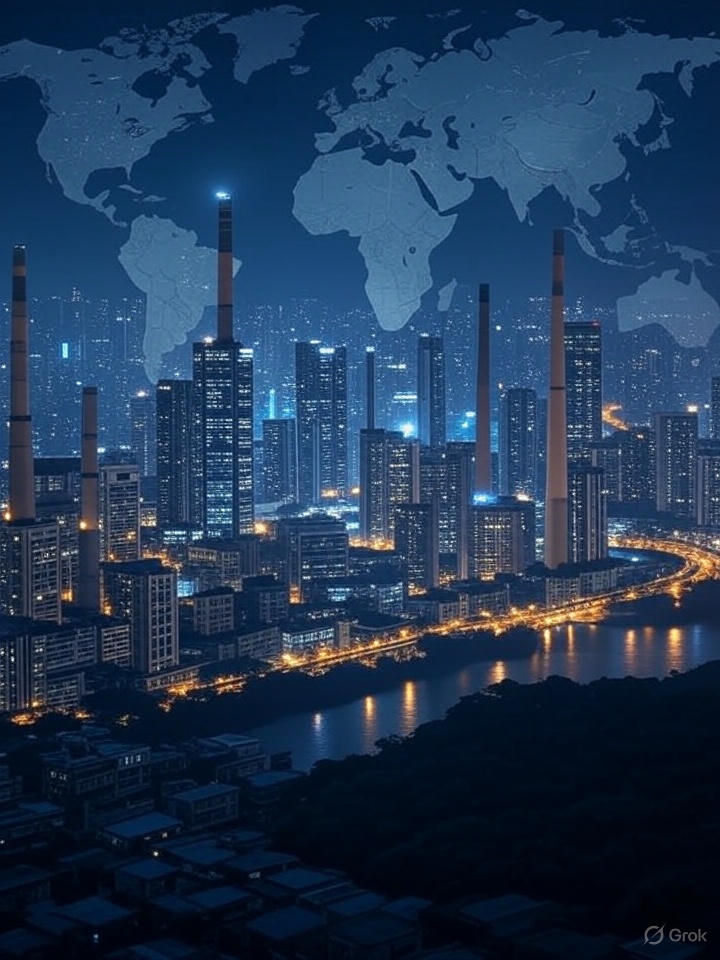The Forest That Cracked: Why Your Grocery Bill, Air, and Future Are at Stake
- thebrink2028
- Sep 17
- 3 min read

Imagine a 2032 headline screaming: "Global Food Prices Soar as Pollinators Vanish, Crops Fail." Your local supermarket shelves half-empty, tomatoes priced like truffles, and clean water a luxury. This can be the future—if this spread of a silent crisis fracturing the world’s forests today. In Brazil, a jaguar paces a shrinking patch of Amazon, hemmed in by soy fields; in Indonesia, orangutans cling to dwindling groves as palm oil plantations creep closer. These aren’t just nature’s tragedies—they’re your grocery bill spiking, your air turning toxic, and your kids’ future unraveling, fragment by fragment. But how ???
Let me explain, Forest fragmentation is the relentless carving of nature’s lungs into isolated scraps. From 2000 to 2020, 51-67% of global forests became more fragmented, with tropics hit hardest at 58-80%. Driven by agriculture, mining, and roads slicing through wilderness, this crisis disrupts ecosystems that cover 31% of land, sequester 7.6 billion tons of CO2 yearly, and house 80% of terrestrial biodiversity. For the curious reader grabbing coffee right now, here’s the deal: fragmented forests mean weaker crops, dirtier air, and pricier essentials. When trees are cut into patches, pollinators like bees can’t roam, slashing yields for 75% of global crops—think coffee, apples, almonds. That’s your morning brew or kid’s lunchbox getting pricier.
Why should we care, we are not environmentalists?
Because this hits your wallet and health directly. Fragmented forests drive up food costs—global crop losses from pollination declines already cost $577 billion annually, and fragmentation amplifies this by 20-30% in hotspots like India or Brazil. It’s also your air: forests filter 30% of urban pollutants, but fragmented patches lose 40% of that capacity, spiking asthma rates in cities like Delhi or São Paulo. And it’s your community—floods and droughts, worsened by fragmented forests’ reduced water retention (25% less in degraded zones), hit families and urban water bills. This isn’t tree-hugging; it’s about keeping your life affordable and livable.
Globally, systemic breakdowns—like the 2000s fisheries collapse or urban sprawl’s biodiversity toll. Tropics, home to 50% of species, fragment fastest—Brazil’s soy boom and Indonesia’s palm oil fields lead, while boreal forests in Canada and Russia lag at 40-50%. But it’s not just area loss (4.7 million hectares annually); fragmentation doubles the damage via edge effects, degrading 20-30% of forest interiors with invasive pests, wind, and drier microclimates. It’s like ocean dead zones or suburban sprawl, but on a planetary scale.
Here’s the shock and most media will mute over: fragmentation isn’t just tree loss—it’s an extinction accelerator and climate time bomb. Edge effects degrade 50-70% more forest than clear-cutting, releasing 1.5 billion tons of extra CO2 yearly—equal to India’s emissions—through dieback and fires. Even “protected” areas (17% of forests) saw 18% fragmentation when borders touch farms or roads, as poachers and pollutants ignore fences.
TheBrink adds that this fuels tipping points like Amazon savannization, where fragmented soils emit methane, warming faster than predicted.
For regular folks, it’s worse: Indigenous communities, stewarding 80% of biodiversity, lose 30-40% of viable land in places like the Congo Basin, spiking local food insecurity that expands to global markets.
But this is just the surface. What isn’t being told—the commodity booms driving this, the blind spots in enforcement tech, and the survival guide for your family—is where TheBrink goes next.
Unlock the next 10 year scenarios everyone else is missing, from Amazon’s collapse and engineered food to your cost-of-living shield—don’t be the last to prepare.
Predictive scenarios, like 2035 Amazon carbon sink collapse. A deeper dive into risks and opportunities, from rewilding profits to policy gaps. A step-by-step guide to future-proofing your budget and community. Global parallels, from African savanna splits to Arctic thaw edges.
Your awareness is the first step—by simply engaging with the future truths many fear to face, you're already part of TheBrink movement.
We'd love to invite you to a ($20 monthly) paid subscription to ensure you never miss our content. Many platforms and social media channels have been restricting or removing our posts, so subscribing is the best way to receive our stories directly in your inbox, unfiltered and uncensored.
If you are an agency, a content developer, businessman or a concerned individual you can also sponsor our next topic to uncover hidden truths and inspire change.
Click "Sponsor" or contact thebrink2028@gmail.com for partnership opportunities.
Thank you for being part of this journey.
Subscription access is open now.
Send the receipt of your payment and send to thebrink2028@gmail.com if you want in.
If forests keep fracturing, will your family afford food or clean air?


